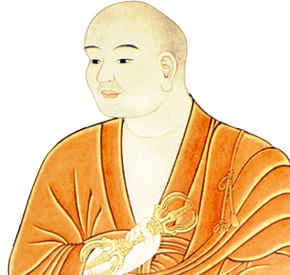
Living in Tara, far from most Jets and in rural settings, I sometimes wonder if I'm missing out on anything. But then I remember that 1)I have more reason to practice Japanese due to my isolation, and 2)People in the big city often waste their time going out to the bar every night. I could do that in Tara-cho if I was so inclined.
Another reason I like living in this town is the history. Shrines, temples, castles... we've got it all. I read of the folksong "Take no Taro-san" today, and found it really interesting, because of the backstory. If you find Japanese Buddism, Shinto, Christianity, and other such stuff interesting, you'll probably find it interesting too.
Expand this post to keep reading...
Compared with other prefectures, Saga seems to have fewer folksongs. However, one stands out and has been sung in the southwestern part of our prefecture since the late 18th century...
It sings of a good-looking monk, Shintaro, who was an idol among the village girls. The young monk named Shintaro was working at Kinsenji Temple up in the mountains. It was not allowed for women to be in the mountains because they were believed to be sacred and people thought women would disgrace the atmosphere. There was nothing for the girls to do but wait for Shintaro to come down to the village on errands. Whenever he came, they cheered him along the way.
There used to be a faith in the mountains themselves during the 9th century or so. People believed lived gods in them, and came to worship them. Kinsenji Temple, where Shintaro had been working, had a history as long as the previously mentioned faith in the mountains.
The Taradake Mountains lie between Saga and Nagasaki prefectures, rising nearly 1,000 meters above sea level. Mt Taradake, the 2nd Highest*, has been a sacred mountain. Since the 8th century, monks have trained at the shrine located upon it.
A little down south is Kinsenji Temple*, built at the same time as the shrine. The monks recognized the two places to be united, and also believed in the concept that the gods ought to be saved by Buddha. Over 70 shrines in Kyushu had been placed under the authority of Taradake shrine. The idea that gods are another phase of Buddha remained quite long till the late 19th century, when the Meiji government banned the keeping of Buddism with Shinto gods in 1868.
A revolt by Christians in 1538 resulted in a lot of shrines and temples, including Kinsenji temple, where burned down. The head preist, Shunkei, escaped from the temple with three images of Buddha on his back. After some time the temple was rebuilt, and the images were reinstalled.
For some reason, the Meiji government declared every shrine to be seperated from the temples, and baned financial protection (why the Meiji guys were such jerks I don't know), and Kinsenji Temple, being so remote, fell into decline. Taradake shrine, on the other hand, has been taken care of by the local people.
So anyway, who was Shintaro? He was a warrior-monk who servd at the mountainous temple and the shrine at the same time. In those days, warrior-monks doubled as secretaries quite often. Locals think Shintaro may have been from my town. He was considered ridiculously handsome.
During 1780, a song named "Zanza-bushi" spread through Japan. Saga people adapted the melody and used it in "Take no Shintaro-san."
When Shintaro comes down,--1st and 2nd stanza.
Let us light a thousand lanterns along the way.
He's so handsome and charming!
When Shintaro goes back,
Let us make his way slippery with water.
He's too handsome to be set free!
*: You may have noticed that these are the same places I visited in this post.
Oh, if someone neglects to update for a month or so, I put their link in a place where my obsessive-compulsive self is not forced to check as often. ;)
ReplyDeleteI'm hoping you have an update for us then.
I really, really envy you right now. To live in rural Japan has been a small, quiet dream of mine for several years. Enjoy it, or you'll be taking a lot of Taro-san from my foot. ;-)
ReplyDelete